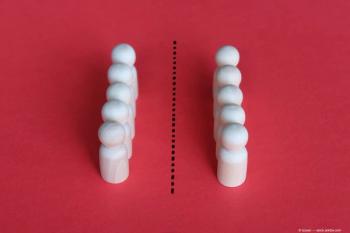
IATS gives insights on aphakic glaucoma
The use of modern surgical techniques with or without IOL implantation does not eliminate the development of glaucoma or suspected glaucoma, according to recent study results.
Durham, NC-The use of modern surgical techniques with or without IOL implantation does not eliminate the development of glaucoma or suspected glaucoma, according to recent study results.
The Infant Aphakia Treatment Study (IATS) investigated the need for prospective data on the development of glaucoma in aphakic eyes 1 year following surgery for congenital cataract.
Analyses to identify risk factors indicate that patients who are younger at the time of cataract surgery, with or without persistent fetal vasculature (PFV), seem more likely to develop an early glaucoma-related adverse event.
“Continued follow-up of study subjects for the development of glaucoma will undoubtedly yield more cases and more information about the development of this unwelcome complication,” said Sharon F. Freedman, MD, professor of ophthalmology and pediatrics, Duke Eye Center, Durham, NC.
Funded by the National Eye Institute, IATS was a multicenter trial in which 114 infants-who had been operated on for congenital cataract between 1 and 6 months of age-were randomly assigned into two groups to receive visual rehabilitation by primary IOL implantation with spectacle correction or contact lenses.
Vision at 5 years following surgery is the primary endpoint for the study, but the development of glaucoma is one of the secondary outcome measures.
Patients were excluded from the study if they had a corneal diameter <9 mm, IOP >25 mm Hg, or PFV causing stretching of ciliary processes.
Data from the 1-year visit showed no significant difference between the IOL and contact lens groups in median visual acuity. However, the IOL group had a 2.5-fold greater occurrence of intraoperative complications during the initial surgery, and a 5-fold increase in additional surgery.
During the first year, a total of 10 patients developed glaucoma and 4 patients were suspected to have glaucoma. There were no significant differences comparing the IOL and CL groups in rates of glaucoma (12% versus. 5%), suspected glaucoma (3.5% in each group), or total glaucoma-related adverse events (16% versus 9%).
Median age was about 1 month younger among subjects who developed a glaucoma-related adverse event relative to their unaffected counterparts, and trends showed they developed a smaller corneal diameter and a diagnosis of PFV.
Development of a glaucoma-related adverse event was not associated with preoperative IOP or the need for repeat surgery to clear the visual axis, which was reassuring, Dr. Freedman said.
In multivariate analysis, the odds of developing a glaucoma-related adverse event were 3-fold higher for eyes with PFV versus those without PFV, and 1.6-fold higher for a child 1 month younger than another, after adjusting for PFV.
Among eyes with an IOL, the rate of a glaucoma-related adverse event was not significantly different comparing subgroups with the implant in the capsular bag (7/52 eyes, 13%) versus in the ciliary sulcus (2/4 eyes, 50%).
Median visual acuity at 1 year of age was a little worse in eyes that developed a glaucoma-related adverse event, but not significantly different compared with unaffected eyes.
For more articles in this issue of Ophthalmology Times eReport, click
To receive weekly clinical news and updates in ophthalmology,
Newsletter
Don’t miss out—get Ophthalmology Times updates on the latest clinical advancements and expert interviews, straight to your inbox.



















































.png)


